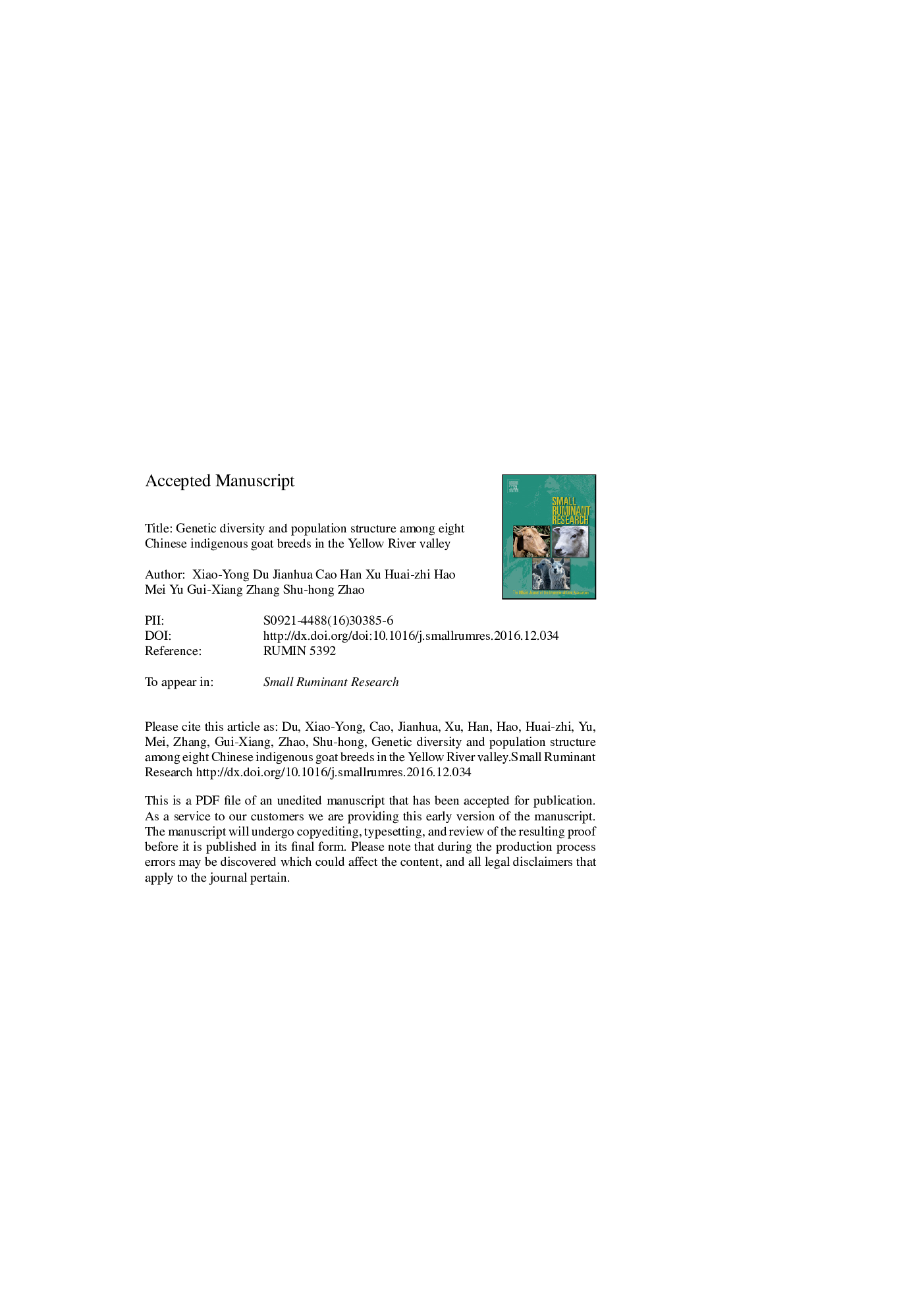| Article ID | Journal | Published Year | Pages | File Type |
|---|---|---|---|---|
| 5544241 | Small Ruminant Research | 2017 | 28 Pages |
Abstract
Indigenous goat breeds of China are advantageous because of their better adaptation to specific environments and traits of cultural, historical and scientific value. In the present study, the population structure and genetic diversity of eight Chinese indigenous goat populations and a population of Boer goat as an outlier were analyzed by typing 16 microsatellite markers. Mean unbiased estimates of expected heterozygosities ranged from 0.641 in Zhongwei goat to 0.718 in Jingning Grey goat. An overall heterozygote deficiency across all loci was observed (PÂ <Â 0.001), which associated with high positive inbreeding values of all indigenous populations. Analysis of molecular variance indicated relatively low variance of 4.98% exists among these Chinese native breeds. In the geographically wider distributed breeds there were indications for deviations from random breeding. Both analysis of genetic distances and model-based clustering indicated these native goats are divided into two groups between the middle-upper (western) and the lower (eastern) Yellow River Valley. We propose that this study offered valuable results for interpretation of biodiversity of the indigenous breeds and will be of importance for future conservation and utilization strategies.
Related Topics
Life Sciences
Agricultural and Biological Sciences
Animal Science and Zoology
Authors
Xiaoyong Du, Jianhua Cao, Xu Han, Huaizhi Hao, Mei Yu, Guixiang Zhang, Shuhong Zhao,
